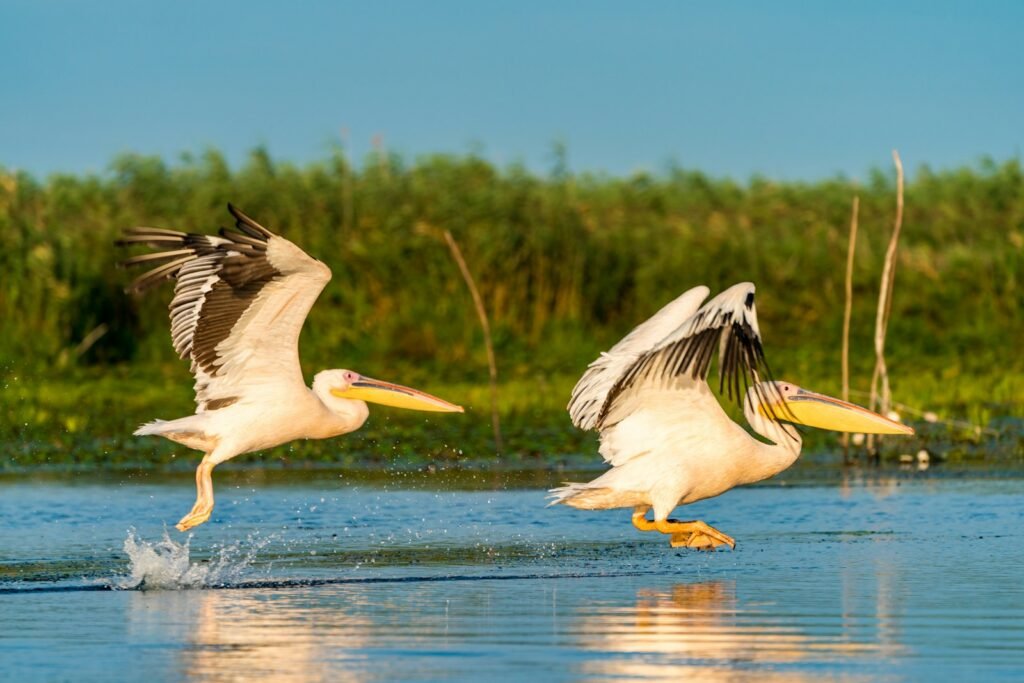Along the edge of the Mississippi Sound, where storms redraw shorelines and tides fold over miles of sand, a quiet comeback is underway. Brown pelicans – once gone from these rookeries – are reclaiming nest space on rebuilt bars and barrier islands. Their return is more than a feel‑good wildlife story; it’s a stress test of coastal recovery after decades of chemical bans, habitat work, and hard lessons from disasters. The mystery is why now, and the answer threads through policy decisions, engineering feats, food webs, and a dash of luck with the weather. If you want to know whether a coast is healing, watch a pelican land with a beak full of grass and a partner waiting on a high, sun‑baked mound.
The Hidden Clues

What if the comeback began with a single scrape of sand on a silent island? Biologists noticed early signs not in huge flocks but in small, stubborn details: adults hauling sticks to the same patch of dune, a tight circle of birds guarding nest bowls, a sudden hush broken by the clatter of bills. These are the breadcrumbs that point to a colony forming, the kind of pattern you only see when you’ve spent enough mornings in the glare watching for motion against the white of shell banks.
In Mississippi, many of these clues showed up on surgically rebuilt shorelines – places raised just high enough to stay dry on spring tides yet low enough to grow patchy grasses. Add a string of calm weeks with steady baitfish nearby, and the equation tilts toward nesting. The signals are subtle, but when they line up, the coast starts to sound like it used to.
From to Resilience

Brown pelicans in the Gulf were hammered by toxic legacies, especially the pesticide era that thinned eggshells and crushed reproduction. Banning those chemicals set the stage for a long rebound, but recovery needed time and clean food webs to filter through the system. Hurricanes then piled on, wiping out entire rookeries in a single night and scattering adults to safer water.
Yet pelicans are built for persistence: they mature slowly, live long, and learn good sites by returning, again and again, to what worked. When new cohorts successfully fledge, knowledge compounds like interest, and colonies can grow quickly. Mississippi’s recent nesting is a product of that compounding – and of people finally giving them places to land.
Islands Rebuilt, Nests Reborn

The most visible driver of the comeback is habitat restoration that literally moved earth. Engineers stitched broken barrier islands back together with dredged sand, elevating flats just above storm‑wash and replanting them with dune grasses that anchor the surface. Those higher, drier patches are pelican gold: open, breezy platforms with line‑of‑sight to would‑be predators and a short commute to the Sound.
Back‑barrier shoals and created spits are doing quiet heavy lifting too, spreading risk across multiple sites so one storm doesn’t erase a whole season. Managers post closures during nesting months, steer boats wide of rookeries, and repair breaches before the next big blow can unravel the work. The result is a mosaic of options – exactly what colonial nesters need when weather rolls dice.
Food on the Wing

Nests don’t fill unless bellies do, and pelicans are brutally honest about prey. When schools of small fish – menhaden, mullet, anchovies – pulse along the coast, adults commute with bulging pouches and chicks grow fast. Freshwater inflows that temper salinity, along with healthy marsh edges, tend to boost those baitfish surges and stabilize the buffet.
Fishery rules and timing matter as well, especially nearshore harvest patterns that can thin out the very schools pelicans target. Years with cooler springs or fewer hypoxic zones often align with better chick survival, while prolonged heat can push prey deeper or offshore. In short, food maps draw nest maps – and Mississippi’s recent maps have improved.
Science in the Rookery

Counting pelicans used to mean hot decks, long lenses, and a lot of guesswork. Now, small drones fly high, snap orthomosaics, and let analysts tag nests on screens without spooking parents from eggs. Thermal imagery picks up brooding adults under glare, and machine‑learning tools translate pixels into reliable numbers by the time the boat hits the ramp.
On the ground, lightweight bands and careful, short visits track survival without dragging stress out. Some projects pair nest counts with environmental DNA from water samples to gauge what fish were recently in the area. The result is a sharper feedback loop: when habitat tweaks work, scientists see it within a season, not years later.
Why It Matters

Pelicans are charismatic, but they’re also coastal auditors. A thriving colony usually means the trifecta is in place: resilient habitat, dependable forage, and smart disturbance rules. Compared with past decades when managers had to infer success from scattered sightings, today’s data‑rich approach makes cause and effect harder to ignore and easier to act on.
The stakes extend beyond one species. Colonial waterbirds concentrate nutrients, fertilize vegetation, and draw ecotourism that keeps local conservation visible and funded. When pelicans vanish, it’s often a red flag that something wider – chemical, climatic, or economic – has shifted. Their return is a receipt that policy and restoration can still move the needle.
The Future Landscape

Sea‑level rise and stronger storms are the headwinds no one can wish away. The winning designs now are dynamic: raised rookeries that can be topped up with thin‑layer sediment, living shorelines that flex instead of fracture, and spill‑over sites ready to host birds when a main rookery floods. Think of it as a relay race, with habitat passing the baton through rough seasons.
Emerging tools add speed. Satellite tags that switch off near nests protect privacy while revealing commuting routes to the best feeding lanes, and AI can flag early failures so managers intervene before a collapse. The guiding idea is simple but radical for coasts: build for change, monitor in real time, and keep multiple safe bets on the board.
From Policy to the Pier

If restoration is the stage and prey is the script, policy writes the ending. Seasonal closures that actually keep feet and dogs off nesting sand are small acts with oversized payoffs, especially during the first fragile weeks. Coordinated timing between dredging, shoreline work, and bird seasons reduces surprise disruptions that break pair bonds and waste clutch energy.
Regional cooperation has sharpened too, because pelicans treat state lines like sand lines: they fly over them. Shared monitoring protocols mean Mississippi’s counts slot neatly beside neighboring data, exposing gaps and highlighting bright spots. The coast works better when the science grid is seamless.
What You Can Do

Give nesting islands space – hundreds of yards if you can – and idle past marked zones even when the water is glass and tempting. Keep dogs off posted sand, stash trash securely, and resist the urge to send drones over rookeries; a few seconds of buzzing can cost several chicks their day’s meal. If you fish, pack out line and lures so adults don’t drag gear back to the colony.
Support local coastal programs that plant grasses, rebuild dunes, and monitor birds; a small donation can turn into a pallet of plants or a spare drone battery. And when you spot pelicans carrying nest material, report it to state or refuge crews – early intel helps managers protect sites before crowds arrive. The birds are doing their part; the rest is on us – will we keep the runway clear for their return?

Suhail Ahmed is a passionate digital professional and nature enthusiast with over 8 years of experience in content strategy, SEO, web development, and digital operations. Alongside his freelance journey, Suhail actively contributes to nature and wildlife platforms like Discover Wildlife, where he channels his curiosity for the planet into engaging, educational storytelling.
With a strong background in managing digital ecosystems — from ecommerce stores and WordPress websites to social media and automation — Suhail merges technical precision with creative insight. His content reflects a rare balance: SEO-friendly yet deeply human, data-informed yet emotionally resonant.
Driven by a love for discovery and storytelling, Suhail believes in using digital platforms to amplify causes that matter — especially those protecting Earth’s biodiversity and inspiring sustainable living. Whether he’s managing online projects or crafting wildlife content, his goal remains the same: to inform, inspire, and leave a positive digital footprint.




